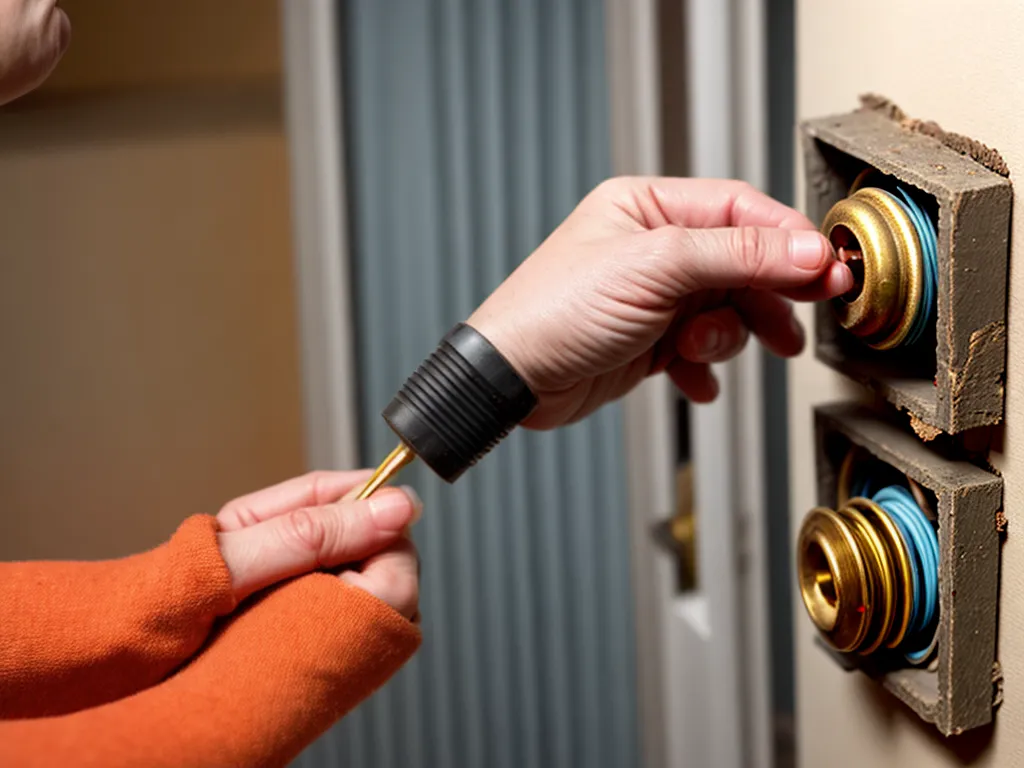
Knob and tube wiring was commonly installed in homes built before the 1940s. While it served its purpose at the time, this old wiring system can be dangerous by today's electrical standards. Replacing knob and tube wiring with modern electrical wiring improves safety and allows your home's electrical system to handle more power. I recently went through the process of removing the outdated knob and tube wiring in my century home. Here's how I did it safely and up to code.
Dangers of Knob and Tube Wiring
Knob and tube wiring consists of individual wires that are separated by ceramic knobs and run through tubes or conduits. While this system was sufficient for small electrical loads when first installed, it has some major drawbacks:
Fire Hazard
- The old wiring has brittle rubber insulation that easily cracks and peels back, exposing bare wires. This can lead to shorts and electrical fires.
Insufficient for Today's Power Needs
- Knob and tube wiring cannot handle the electricity demands of modern appliances and electronics. This can lead to blown fuses, tripped breakers, and damage to devices.
No Grounding
- Old systems do not have a ground wire, posing a shock hazard. Ungrounded electrical systems are no longer to code.
While I was initially hesitant to take on such a major project, the risks of keeping the outdated wiring convinced me it was time for an upgrade.
Planning the Wiring Replacement Project
Replacing knob and tube wiring in an entire house is a major undertaking that requires planning and preparation. Here are key steps I took to plan out my wiring project:
Consult an Electrician
- I hired a licensed electrician to assess my home's knob and tube wiring situation. An expert can advise you on the scope of the project and any specific issues with your home's electrical system.
Consider a Phased Approach
- For a large home, it may make sense to replace the wiring in phases (by floor or section) over time due to cost and labor considerations.
Apply for Electrical Permits
- Permits are required for rewiring projects to ensure the work meets local building codes. I completed the permit application through my city's building department.
Choose a Rewiring Method
- I opted to replace the old wiring completely rather than just pigtailing new wiring off the old. While more intensive, this meant no knob and tube wiring remained.
Research and Hire a Licensed Electrician
- Find a well-reviewed electrician with experience in full home rewires. Get multiple quotes to compare pricing.
Safely Removing Knob and Tube Wiring
Once I had planned out the project, it was time to remove the outdated wiring. Safety was my top concern during this process:
Turn Off Power at Main Panel
- The electrician shut off power to the full home at the main panel before touching any wiring to prevent electrocution.
Wear Protective Gear
- We wore rubber-soled shoes, gloves, and eye protection when removing old wiring.
Check Wires Before Cutting
- Each wire was tested with a voltmeter before snipping to be sure power was off.
Remove Wiring Carefully
- We took care not to damage surrounding materials as old wiring was removed.
Dispose of Wiring Properly
- Old knob and tube wiring cannot just be tossed out. A certified disposal company handled removing the old copper wiring.
Paying close attention to safety resulted in the knob and tube wiring being removed from my home without incident.
Installing New Electrical Wiring
With the old wiring gone, the electrician could install the new wiring system:
Lay Out Wiring Plan
- The electrician mapped out exactly where the new wires and outlets would be run to power all locations.
Run Wires
- New individual wires were run from the main panel through the walls to each outlet and fixture.
Install Junction Boxes
- Modern junction boxes were added to connect wiring through the house.
Connect Grounds
- For safety, all new wiring was properly grounded.
Attach Outlets and Switches
- New electrical receptacles and switches were installed to replace old fixtures.
Connect Devices
- As the new circuits were completed, devices like light fixtures were reconnected.
Add Circuit Breakers
- The main electrical panel was upgraded with enough circuit breakers to manage the rewired home.
The electrician handled all of the new wiring installation professionally while communicating each step. In total, the rewiring took about two weeks.
Wrapping Up the Wiring Replacement Project
Once the new electrical system was in place, there were a few final steps to finish the rewiring project:
Testing and Inspections
- The electrician thoroughly tested all circuits and connections. The wiring passed inspection by the city building inspector.
Patch and Repair Walls
- Holes made for wiring access were patched, painted, and blended into the existing walls.
Add Electrical Labels
- Tags were added at the main panel to identify each new circuit.
Clean Up Work Areas
- The electrician cleaned up all work areas and removed unused wiring, leaving the home tidy.
Documentation
- I received full documentation of the project including copies of permits and inspections.
Replacing knob and tube wiring was a major undertaking, but I now have complete peace of mind knowing my home's electrical system is safe and up to modern standards.